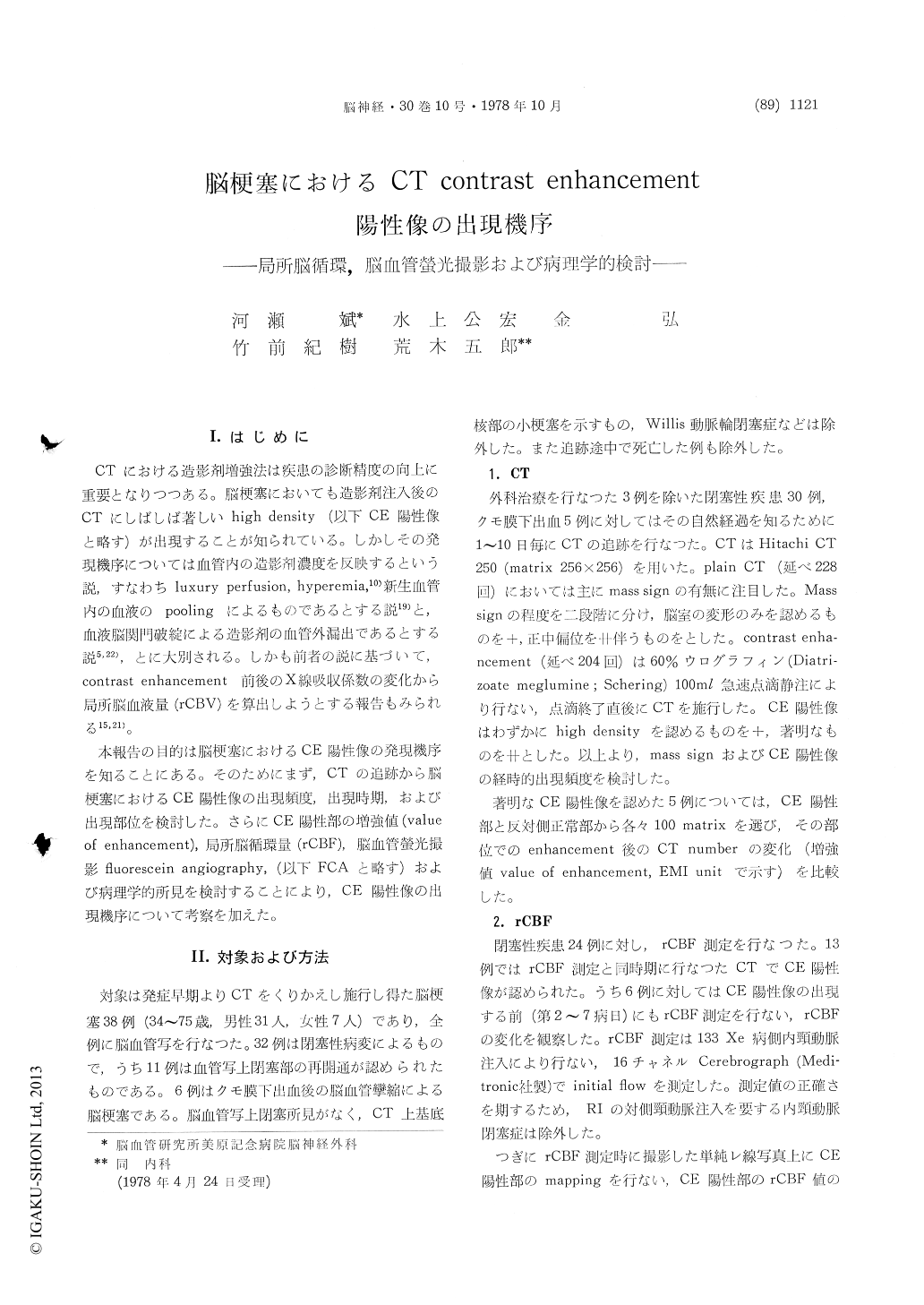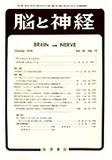Japanese
English
- 有料閲覧
- Abstract 文献概要
- 1ページ目 Look Inside
I.はじめに
CTにおける造影剤増強法は疾患の診断精度の向上に重要となりつつある。脳梗塞においても造影剤注入後のCTにしばしば著しいhigh density (以下CE陽性像と略す)が出現することが知られている。しかしその発現機序については血管内の造影剤濃度を反映するという説,すなわちluxury perfusion,hyperemia,10)新生血管内の血液のpoolingによるものであるとする説19)と,血液脳関門破綻による造影剤の血管外漏出であるとする説5,22),とに大別される。しかも前者の説に基づいて,contrast enhancement前後のX線吸収係数の変化から局所脳血液量(rCBV)を算出しようとする報告もみられる15,21)。
本報告の目的は脳梗塞におけるCE陽性像の発現機序を知ることにある。そのためにまず,CTの追跡から脳梗塞におけるCE陽性像の出現頻度,出現時期,および出現部位を検討した。さらにCE陽性部の増強値(value of enhancement),局所脳循環量(rCBF),脳血管螢光撮影fluorescein angiography,(以下FCAと略す)および病理学的所見を検討することにより,CE陽性像の出現機序について考察を加えた。
Thirty-five patients with cerebral infarction were studied with serial computed tomography (CT). The patients with a small infarction located in the basal ganglia or the brain stem were excluded. Regional cerebral blood flow (rCBF) was also inves-tigated in 24 patients by the 133Xe intracarotid injection method, and thirteen of them had rCBF study when CT showed positive contrast enhance-ment (CE). Additional three patients, who had shown positive CE, underwent surgery, and fluorescein cortical angiography (FCA) was per-formed at operation in two patients, and patho-logical specimen was obtained in one patient.
More than 90 percent of the patients with infarction showed positive CE, mostly 10 days to one month of stroke. The quantitative value of enhancement in the lesion was 5 to 22 times (average 9 times) higher than that of the opposite normal hemisphere. rCBF values of enhanced area were significantly higher (49.7±12.7m//100 g/min.) than that of the area where showed no enhance-ment on CT (29.0±9.3ml/100 g/min.). However, hyperemic regions were seen only in four patients, and two of them showed no enhancement on CT. This fact does not agree with the hypothesis that positive CE indicates a manifestation of the focal hyperemia. FCA showed extravasation of fluores-cein dye in the perivascular spaces. Microscopic examination of specimen revealed numerous lipid-laden microglias and capillaries in the infarcted area, particularly at the edges of the infarct.
These findings suggest that the positive CE in cerebral infarction may be caused by extravasation of contrast material by opening the blood brain barrier of newly formed or dilated vessels in the infarcted area.

Copyright © 1978, Igaku-Shoin Ltd. All rights reserved.


